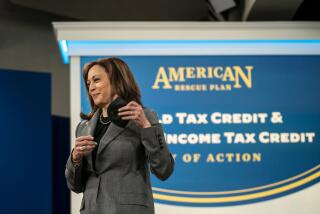Trump’s tax announcement is unlikely to provide many details

The White House now says that Trump simply “will be outlining principles for tax reform” during his much-ballyhooed Wednesday event. (Sign up for our free video newsletter here http://bit.ly/2n6VKPR)
President Trump promised a “big announcement” this week on one of his signature issues — tax reform.
But if you’re looking for all the long-awaited details of his promised “massive tax cut” for businesses and individuals, you’ll have to wait a while longer.
The White House now says that Trump simply “will be outlining principles for tax reform” during his much-ballyhooed Wednesday event.
That’s a far cry from what Trump promised last week.
“We’ll be having a big announcement on Wednesday having to do with tax reform,” Trump said during a speech at the Treasury Department on Friday.
“The process has begun long ago, but it will formally begin on Wednesday,” he said.
Earlier on Friday, the told the Associated Press in an interview that “I shouldn’t tell you this, but we’re going to be announcing, probably on Wednesday, tax reform.”
He provided no new details then, but said: “It will be bigger, I believe, than any tax cut ever. Maybe the biggest tax cut we’ve ever had.”
Trump took to Twitter on Saturday to again tout that “Big TAX REFORM AND TAX REDUCTION will be announced next Wednesday.”
But on Sunday, Mick Mulvaney, director of the White House Office of Management and Budget, downplayed what was coming this week.
“I think what you’re going to see on Wednesday is some specific governing principles, some guidance,” he said on “Fox News Sunday.”
“Also some indication of what the rates are going to be,” Mulvaney said. “I don’t think you’re going to see something and I don’t think anybody expects us to roll out bill language on Wednesday. In fact, we don’t want to do that.”
Details will be limited to “here are some of the ideas that we like, some of the ideas we don’t like … here are some of the rates we’re talking about,” Mulvaney said.
A White House spokeswoman on Monday said there would be “no further comment beyond what the president has said on this.”
Trump outlined his principles and proposed rates during the campaign. He said he wanted to lower the corporate tax rate to 15% from 35%. And Trump said he wanted to reduce the seven individual tax brackets to four, with the highest rate dropping to 25% from 39.6%.
But House Republicans are working on their own plan that has smaller tax cuts.
The House plan also would eliminate all personal deductions except for mortgage interest and charitable contributions. Among the deductions to be eliminated would be the one for the payment of state and local taxes, which would be a big hit to Californians and residents of other states with high taxes and high earners.
Trump’s campaign tax proposal kept the state and local tax deduction but capped itemized deductions at $100,000 for single filers and $200,000 for married couples filing jointly.
The House Republican plan also includes a controversial border adjustment tax, which Trump hasn’t yet taken a position on.
Trump also promised his tax overhaul would be “revenue-neutral,” meaning the cuts would be offset by the elimination of other tax breaks to keep from increasing the budget deficit.
Treasury Secretary Steven T. Mnuchin said Saturday that would be accomplished through the use of controversial “dynamic scoring,” which assumes those cuts would fuel faster economic growth.
“There’s no question we’re looking at reforms that will pay for themselves with growth,” he said during a public question-and-answer session with Christine Lagarde, managing director of the International Monetary Fund.
“Under dynamic scoring, this will pay for itself,” he said. Under conventional “static scoring,” which doesn’t incorporate growth estimates, “there will be short-term issues,” he said.
In 2015, House Republicans required nonpartisan congressional number crunchers to use dynamic scoring as well as static scoring on major bills.
Dynamic scoring uses complex models to evaluate the economic effects of policy changes. But many economists are skeptical of dynamic scoring because they said it’s very complicated to accurately make such estimates.
Twitter: @JimPuzzanghera
More to Read
Inside the business of entertainment
The Wide Shot brings you news, analysis and insights on everything from streaming wars to production — and what it all means for the future.
You may occasionally receive promotional content from the Los Angeles Times.











